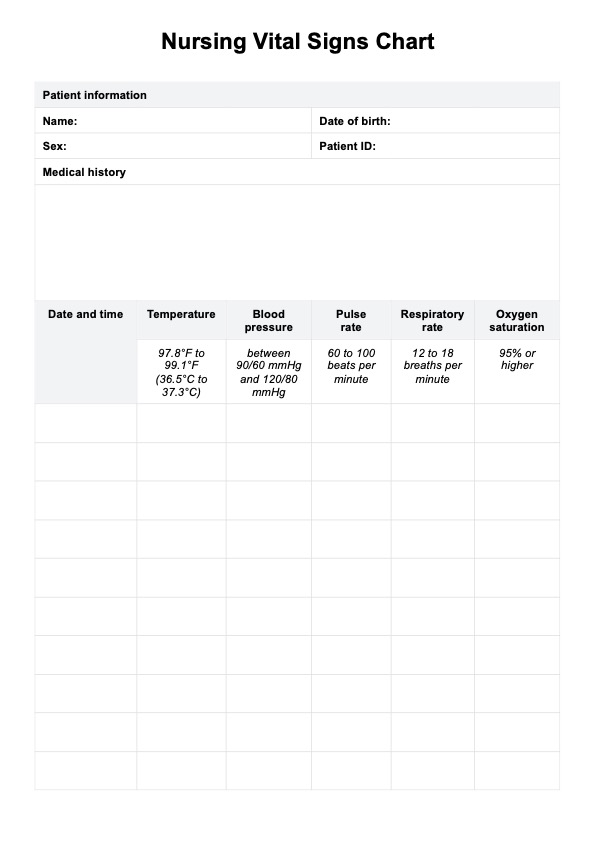A normal blood pressure reading typically ranges between 90/60 mmHg and 120/80 mmHg. To ensure accuracy, it's important to take multiple blood pressure measurements.

Nursing Vital Signs Chart
Optimize patient care with our Nursing Vital Signs Chart. Track and analyze crucial health indicators for informed healthcare decisions.
Use Template
Nursing Vital Signs Chart Template
Commonly asked questions
Keeping vital signs in a normal range helps ensure proper functioning and can prevent serious health issues. It allows healthcare providers to spot problems early and respond before they occur.
Systolic pressure is the top number and measures the pressure in your arteries when your heart beats, while diastolic pressure is the bottom number and measures the pressure when your heart rests between beats.
EHR and practice management software
Get started for free
*No credit card required
Free
$0/usd
Unlimited clients
Telehealth
1GB of storage
Client portal text
Automated billing and online payments











